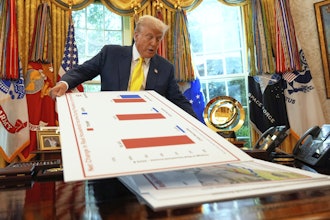WASHINGTON (AP) — Wholesale prices fell for a fourth straight month in February as a decline in food prices offset an increase in gasoline prices.
The Labor Department said Friday its producer price index, which measures inflation pressures before they reach consumers, dropped 0.5 percent in February. The figure follows a 0.8 percent fall in January, which had been a record decline in a government series that goes back to 2009.
Core producer prices, which exclude volatile food and energy costs, also fell 0.5 percent during the month. Over the past 12 months, producer prices have shed 0.6 percent while core prices have climbed a modest 1 percent.
Since last year inflation since has moved even farther below the Federal Reserve's goal of seeing prices rise about 2 percent annually.
Food costs were down 1.6 percent in February. Energy costs overall were flat as declines in natural gas and electric power combined with a gain in gasoline, which rose 1.5 percent.
Gasoline prices had been falling since the middle of last year and hit a six-year low in January of $2.03 a gallon, according to AAA. But since gas prices have risen since then, with the nationwide average for a gallon of regular now at $2.45, up from $2.23 a month.
Paul Ashworth, chief U.S. economist at Capital Economics, said that about one-third of the drop in overall prices in February stemmed from a decline in profit margins at service stations. Those margins had risen for a time last year as gas stations took advantage of falling fuel costs to boost profits. But in February, the margins returned to more normal levels as gas prices rose.
Ashworth said nothing in the report changed his view that the Federal Reserve next week will stop using the word "patient" to describe how long it is prepared to wait before starting to raise a key interest rate from its record low level. Ashworth said he expects the first Fed rate hike to occur in June.
Robust hiring in the past 12 months and lower gas prices lifted consumer confidence in January and February to its highest levels since the recession. But those trends have yet to boost consumer spending this year, a key driver of economic activity. The government reported that retail sales fell for a third month in a row in February as harsh winter weather depressed shopping.
But many analysts look for those declines to reverse in the coming months. The economy is expected to turn in its strongest growth this year in a decade while overall inflation stays modest.






















